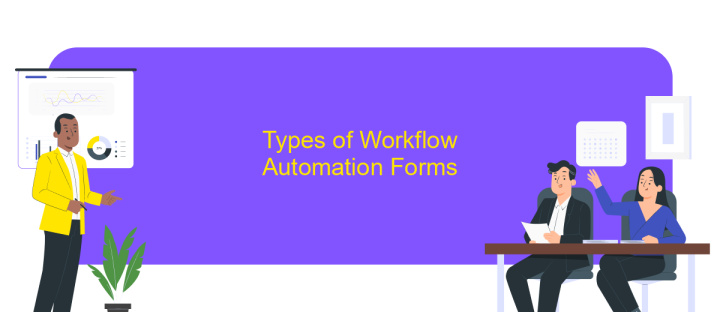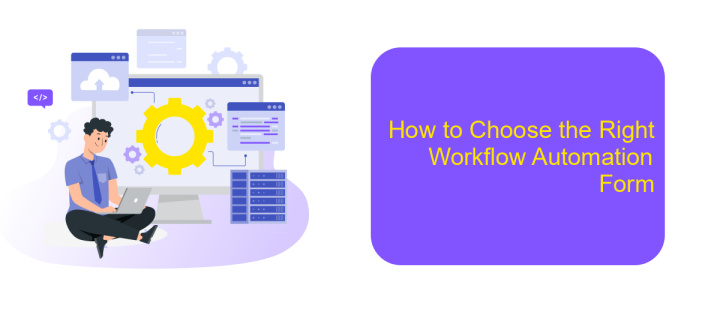Workflow Automation Forms
In today's fast-paced business environment, optimizing efficiency and minimizing manual tasks are crucial. Workflow automation forms play a pivotal role in streamlining processes, reducing errors, and saving valuable time. By automating routine tasks, organizations can focus on strategic initiatives and enhance overall productivity. This article explores the benefits, implementation strategies, and best practices for leveraging workflow automation forms in various industries.
Introduction
Workflow automation forms are revolutionizing the way businesses handle repetitive tasks and data collection. By automating these processes, organizations can save time, reduce human error, and improve overall efficiency. These forms can be integrated into various business operations, from customer service to internal communications, providing seamless data flow and real-time updates.
- Streamline data collection and processing
- Reduce manual errors and improve accuracy
- Enhance productivity by automating repetitive tasks
- Enable real-time data updates and reporting
One of the key tools in setting up these integrations is ApiX-Drive, a service that facilitates the connection between different applications and systems. ApiX-Drive allows businesses to automate workflows without the need for extensive coding knowledge, making it accessible for various industries. By leveraging such services, companies can ensure their workflow automation forms are both effective and efficient, ultimately leading to better business outcomes.
Benefits of Workflow Automation Forms

Workflow automation forms significantly enhance efficiency by streamlining repetitive tasks and reducing manual errors. By automating data entry and approval processes, organizations can save valuable time and resources, allowing employees to focus on more strategic activities. This leads to faster decision-making and improved productivity, as routine tasks are handled seamlessly by the automation system.
Moreover, integrating workflow automation forms with other tools and platforms, such as ApiX-Drive, allows for seamless data transfer and synchronization across various systems. ApiX-Drive enables businesses to effortlessly connect their workflow forms with CRM, ERP, and other essential software, ensuring data consistency and accuracy. This integration capability not only enhances operational efficiency but also provides a comprehensive view of business processes, facilitating better analysis and decision-making.
Types of Workflow Automation Forms

Workflow automation forms come in various types, each designed to streamline different aspects of business processes. These forms can significantly reduce the manual effort involved in repetitive tasks, ensuring higher efficiency and accuracy.
- Approval Forms: These forms are used to automate the approval process for requests such as leave applications, expense reports, and project proposals.
- Data Collection Forms: Designed to gather and organize data from various sources, these forms can integrate with databases and other software to ensure seamless data management.
- Feedback Forms: Used for collecting feedback from customers or employees, these forms help in improving services and products based on the gathered insights.
- Integration Forms: Tools like ApiX-Drive can be utilized to set up integration forms that connect different applications, automating data transfer and synchronization between systems.
By leveraging these different types of workflow automation forms, businesses can optimize their processes, save time, and reduce errors. The right choice of form depends on the specific needs and goals of the organization, making it crucial to assess and implement the most suitable options.
How to Choose the Right Workflow Automation Form

Choosing the right workflow automation form can significantly enhance your business processes. Start by identifying the specific needs and goals of your organization. Understand what tasks you want to automate and the outcomes you expect. This will help you narrow down your options and focus on forms that meet your criteria.
Next, consider the ease of use and customization options. A good workflow automation form should be user-friendly and adaptable to your unique requirements. Look for forms that offer drag-and-drop interfaces, pre-built templates, and flexible customization features.
- Identify your business needs
- Evaluate ease of use and customization
- Check for integration capabilities
- Consider scalability and support
Integration capabilities are crucial for seamless operations. Choose forms that can integrate with your existing tools and platforms. Services like ApiX-Drive can simplify the integration process, allowing you to connect various applications effortlessly. Finally, consider the scalability and support offered by the provider to ensure long-term success.
Best Practices for Implementing Workflow Automation Forms
To successfully implement workflow automation forms, start by thoroughly mapping out your existing processes. Identify repetitive tasks and areas where automation can bring the most value. Clearly define the objectives and expected outcomes of automation to ensure alignment with your business goals. Involve key stakeholders from the beginning to gather input and foster a sense of ownership. This collaborative approach will help in designing forms that are user-friendly and meet the needs of all departments.
Next, choose the right tools and platforms for your workflow automation. Consider using services like ApiX-Drive, which offer seamless integration with various applications and systems. ApiX-Drive can help automate data transfer between your forms and other business tools, reducing manual input and errors. Test the automated workflows in a controlled environment before full deployment to identify any issues and make necessary adjustments. Regularly review and optimize your workflows to ensure they continue to meet evolving business needs and improve efficiency.
FAQ
What is workflow automation in the context of forms?
How can workflow automation improve efficiency?
Can I integrate my existing forms with other software applications?
What types of forms can be automated?
Is it difficult to set up workflow automation for forms?
Apix-Drive is a simple and efficient system connector that will help you automate routine tasks and optimize business processes. You can save time and money, direct these resources to more important purposes. Test ApiX-Drive and make sure that this tool will relieve your employees and after 5 minutes of settings your business will start working faster.

